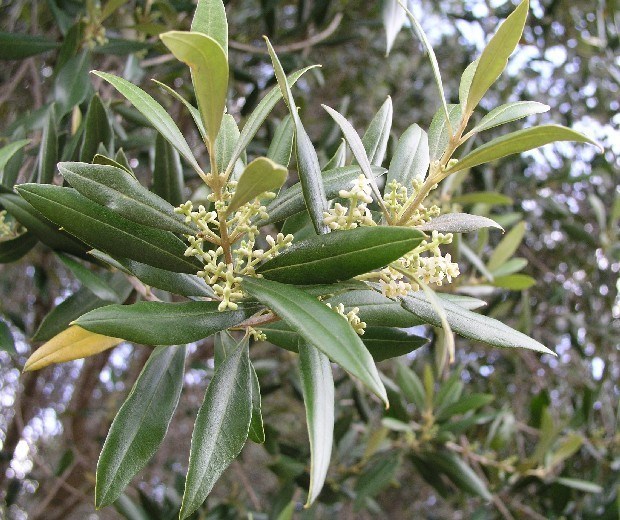Karura Forest #20: African Olive

The custom-made bottle-tops cache is hidden behind a piece of bark in a small hole in the side of this tree along the Turaco Trail which runs between Junctions 8 and 9 in the southern part of the forest.
To access the cache: See GC5FF98 Karura Forest #19 Turaco Path for access information and waypoints.
For background information on Karura Forest including access, fees, opening times, features, a detailed trail map and useful links, see GC4PD3V Karura Forest #1: Intro, Info & Entry.
Olea europaea subsp. cuspidata is one of 6 subspecies of the 33 species of Olea also known as Wild, African, or brown olive, or iron tree. The local (Kikuyu) name is Mutheru.
 It is a much-branched drought and wind-resistant evergreen tree of 2-15m high which lives up to 100 years and thrives on shallow rocky sites. The leaves are dark green and glossy on top and have a dense covering of silvery, golden or brown scales on the underside. The bark is grey to brownish-blackish, smooth to rough when old.
It is a much-branched drought and wind-resistant evergreen tree of 2-15m high which lives up to 100 years and thrives on shallow rocky sites. The leaves are dark green and glossy on top and have a dense covering of silvery, golden or brown scales on the underside. The bark is grey to brownish-blackish, smooth to rough when old.
It has an extensive native range from South Africa, through Africa, the Middle East, Pakistan, India to China. Where it is not native, such as Australia, it is regarded as a noxious weed. It is wind pollinated and spread mainly by birds eating the single-seeded fruit and dispersing the seeds in droppings.
Although the main olive products are olive oil and edible olives, the fleshy, oil-bearing mesocarp used in commercial olive growing is absent in the much smaller fruits of the African Olive. The small fruits are edible. It is widely browsed by livestock and is a valuable year-round source of fodder for goats.
The beautiful hard, heavy, red-brown wood has a wavy, dark grain, is much-prized and durable, has a strong smell similar to bay rum, and is used for fine furniture, turnery and (Akamba) carvings. It. It also provides excellent firewood as it burns very well, with high heat, which led to large amounts being used in railway steam engines before diesel locomotives were introduced. It also produces little smoke and makes long-burning charcoal.
The Wandorbo and Kipsgis a root or bark decotion as remedy for malaria.